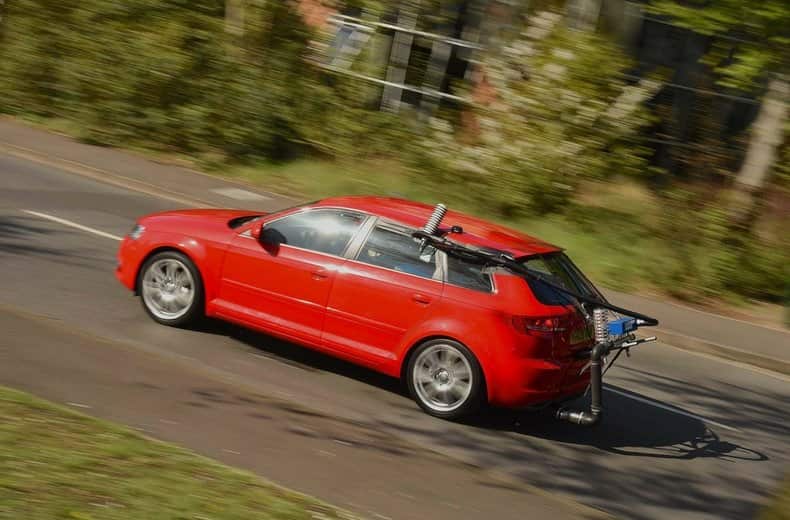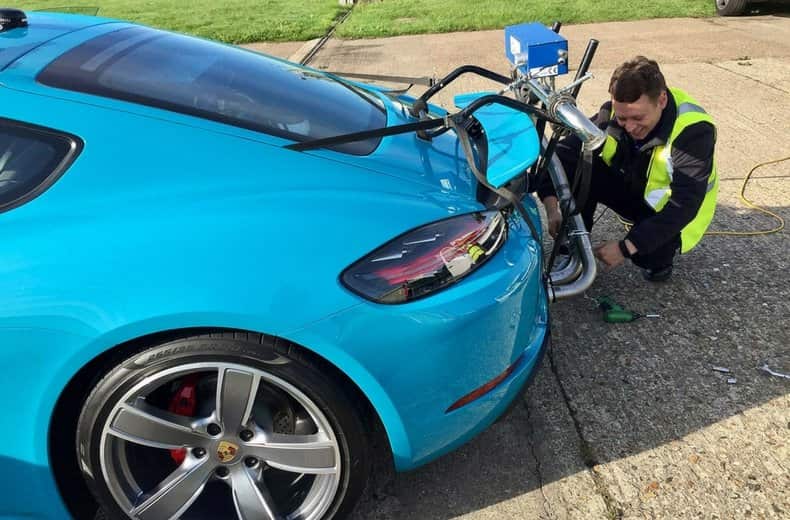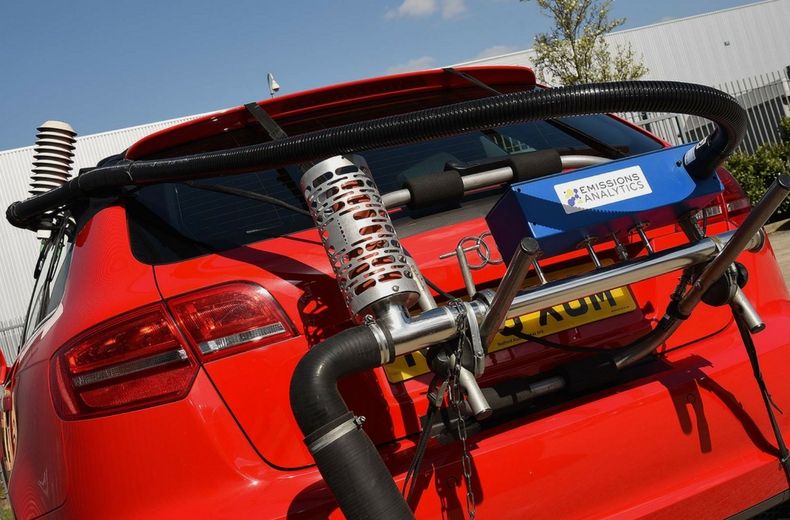Here we offer a simple explanation of the term real-world driving tests and carefully look at how their implementation will affect the average road user.
What are real-world driving emissions tests?

Real-world driving emissions tests are tests that measure the pollutants a car produces while being driven on real roads as opposed to being tested in a lab that simulates real-life driving conditions.
When a car manufacturer makes a car it has to meet a Euro emissions standard, set by the EU. This standard is in place to ensure the cars they are producing aren’t polluting too many harmful substances into the environment.
To guarantee the cars meet the standard, they have to be tested - real-world driving emissions tests are the latest of these tests.
Why do we have them?
Previously, for a car to meet its Euro standard and be made available for mass consumption, it had to pass a test known as the New European Driving Cycle (NEDC) type-approval test, which dates back to the 1980s and was last updated in 1997.
However, motorists have not been able to achieve the fuel economy figures claimed by manufacturers in their advertising and literature, because the tests were carried out in laboratory settings, not on real roads.
Furthermore, consumer confidence in fuel economy and efficiency data hit an all-time low following the ‘dieselgate’ scandal, when ‘defeat device’ software was used to detect when a vehicle was running on a rolling-road within a laboratory.
This has led to the emergence of tough new tests which were implemented in September 2017.
From September last year the NEDC was replaced with the new Worldwide Harmonised Light Vehicle Test Procedure (WLTP) and the Real Driving Emissions test (RDE1) (more on that in the next section).
The WLTP is conducted under laboratory conditions. However, the new test is faster, longer and more dynamic, with the introduction of new variables to deliver results that are more reflective of real-world conditions.
The Real Driving Emissions (RDE) test complements the WLTP, because it is conducted on the road, using a Portable Emissions Measurement System (PEMS). This is an acknowledgment that no laboratory test can ever replicate what happens on the road.

Europe is the first region in the world to introduce on-road testing, which features a car being driven on public roads for between 90 minutes and two hours over a route of at least 29.92 miles.
Combined, the WLTP and RDE tests should narrow or eliminate the gap between theory and reality.
The new tests measure everything from fuel consumption and carbon dioxide (CO2), to nitrogen oxides (NOx), particulates and carbon monoxide (CO). The ultimate aim is to improve air quality and tackle climate change.
Transport minister, Paul Maynard, said: “We are taking strong action to clean up our air and these tough new emissions standards will reduce dangerous pollutants.
“This government has led the way in Europe pushing for on-road emissions tests, alongside a tough new laboratory test, to clean up air in our towns and cities.
“This will ensure all vehicles meet rigorous standards when driven on our roads.”
How do real-world emissions tests work?
Crucially, the RDE test will include urban and rural roads, along with motorway driving, of which five minutes must be at speeds of 62.13mph. Throw into the mix a number of different conditions – such as uphill and downhill driving, and additional vehicle payload – and you have the makings of a far more realistic set of results.
The PEMS will analyse tailpipe emissions of NOx and particulates to ensure all cars meet strict Euro 6 emissions standards on the road as well as in the lab. Better for the environment and better for the motorist.
The PEMS used for testing are sophisticated pieces of equipment, but there is no 'standard' equipment, which means different suppliers might deliver different RDE test results.
Different temperatures and altitude will also have an impact on the results.
With this in mind, the tests will include a 'conformity factor' to allow for a margin of error. This will allow emissions levels to be exceeded by 2.1 times for new-to-market cars from 1 September 2017, with this figure reduced to 1.5 times from September 2019.
The 'conformity factor' is essentially a 'not-to-exceed' limit, but in reality, the RDE results are expected to fall below the current NEDC levels.
What’s next?
The new real-world driving emissions tests will be rolled out in phases, which began in September 2017.
RDE1
From 1 September 2017, every brand-new to market car destined for sale in the EU will undergo the new WLTP test before it gains type approval. From September 2018, all new cars registered will be required to pass the WLTP test before they reach a showroom.
At present, manufacturers have the option of putting new cars through the RDE test, but it will not be mandatory until September 2019. The first stage of RDE –known as step 1 or RDE1 – allows a car to emit 2.1 times the amount of NOx during testing.
The second stage of RDE – known as step 2 or RDE2 – allows the car to emit 1.5 times the amount of NOx, and will become mandatory for new type approvals in January 2020, then all new registrations from January 2021. However, there’s nothing to stop a manufacturer meeting these standards earlier.
RDE2
In the autumn budget 2017, the chancellor Philip Hammond announced a first-year Vehicle Excise Duty (VED) hike for all new diesel cars that fail to meet the new RDE2 standards. It means that the first-year tax of all new diesel cars first registered from 1 April 2018 will be calculated as if they were in the VED band above.
Any next-generation diesels – i.e. those which are certified as meeting RDE2 standards – will be exempt from the hike.
How will these changes affect drivers?
It’s important to remember that the first-year rate rise applies only to new diesel cars registered on or after 1 April 2018. Petrol and electric cars, as well as RDE2-compliant cars, will be unaffected.
Following the 2017 budget announcement, the government said that the amount motorists will pay will depend on the vehicle chosen. For example, someone purchasing a typical Ford Focus diesel could expect to pay an additional £20. Meanwhile, a Volkswagen Golf purchaser will pay £40, a Vauxhall Mokka £300, and a Land Rover Discovery £400.
From a wider perspective, the new WLTP and RDE tests will give consumers fuel economy information that is far closer to what they can expect to experience behind the wheel, allowing them to make a more informed purchase decision.
In the short term, however, a phased transition between the old and new methods means that there’s likely to be some confusion for consumers. Old figures and the equivalent values for WLTP will be displayed, with NEDC data only disappearing from September 2018.
Consumers are advised to refer to the new WLTP figures for a more accurate representation of real-world driving.

RAC Breakdown Cover
Limited time offer.
*£7 a month for new, single vehicle Basic cover. ^For all named members when added to new Extra or Complete cover. Included in Family cover as standard. Excludes Basic cover. Ends 08/05/24, 7am.











